When the Windows 11 search bar stops responding—whether it won’t accept input, freezes, or fails to display results—accessing files, apps, and settings becomes inefficient. This breakdown can result from corrupted search indexes, stalled background services, or misconfigured system components. Addressing this problem requires a targeted approach, starting with the most effective solutions for restoring search performance and reliability.
Restart File Explorer to Restore Search Responsiveness
Step 1: Open Task Manager by pressing Ctrl + Shift + Esc. This tool lets you manage running processes and restart critical Windows components.
Step 2: In the Task Manager window, scroll through the list of processes to locate Windows Explorer. Right-click on it and select Restart. This action will momentarily close your taskbar and desktop before automatically reloading them.

Restarting Windows Explorer refreshes the visual interface and underlying services that support the search bar. This quick reset often resolves unresponsive or frozen search UI without requiring a full system reboot.
Rebuild the Windows Search Index for Accurate Results
The search index is a database that Windows uses to quickly locate files, folders, and content. If this index becomes corrupted or overloaded, search results may be incomplete or the search bar may stop working entirely.
Step 1: Open Settings by pressing Windows + I. Navigate to Privacy & Security and select Searching Windows from the sidebar.
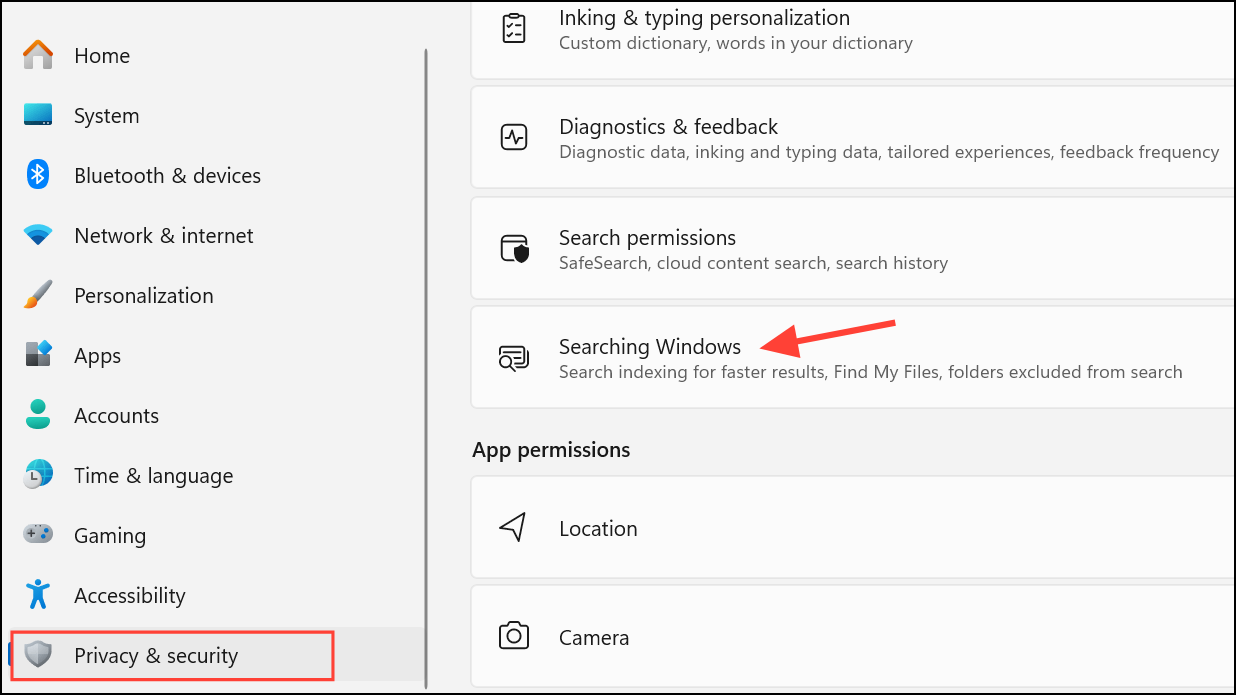
Step 2: Scroll to the bottom and click Advanced indexing options.
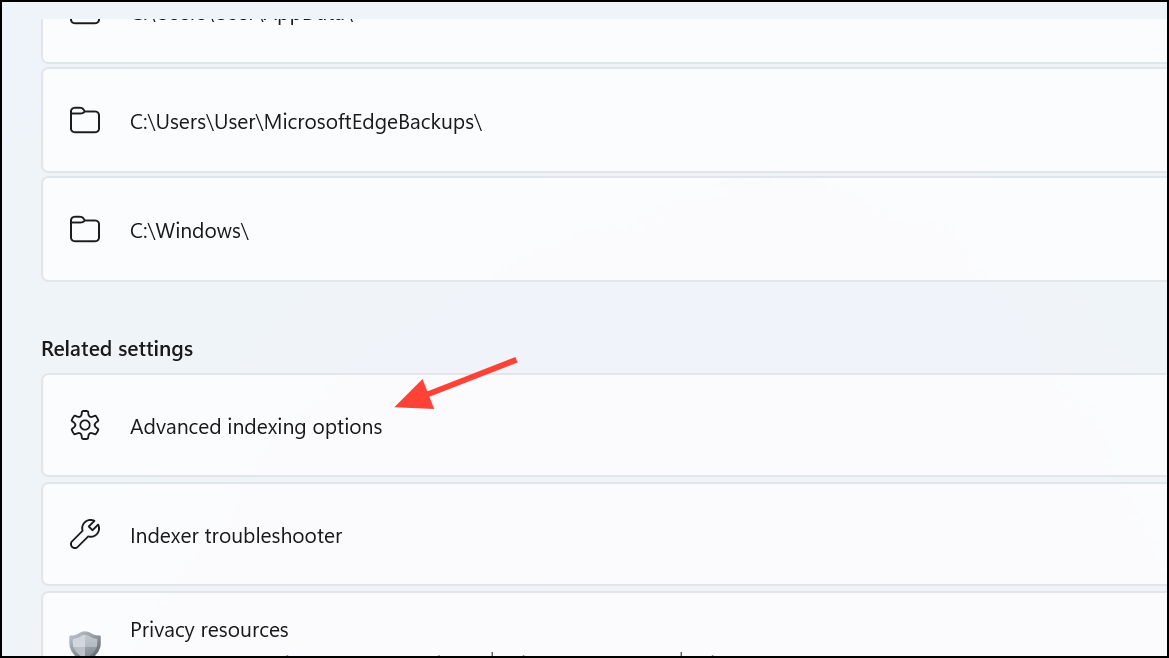
Step 3: In the window that appears, select Advanced, then click Rebuild under the Troubleshooting section. Confirm the action when prompted.
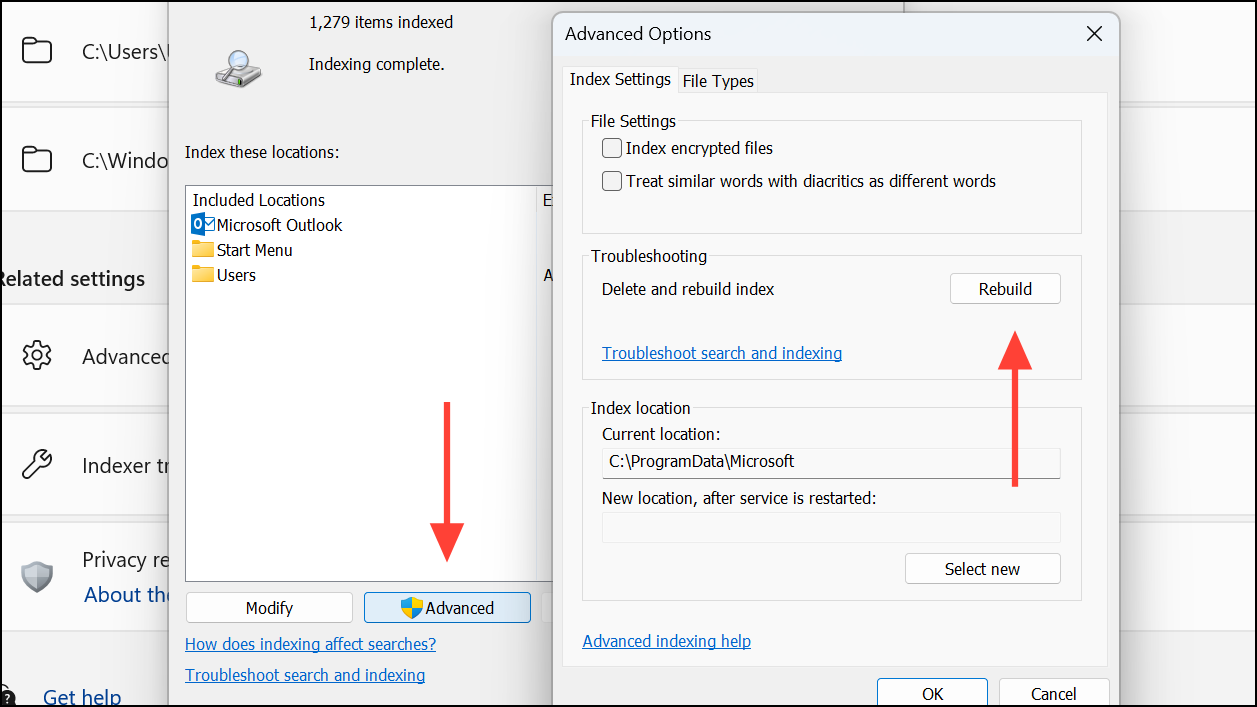
Windows will delete the existing index and begin building a new one. The process may take time, especially if you have many files. During this period, search results may be limited or unavailable, but accuracy and speed will improve substantially once indexing completes.
Restart and Configure the Windows Search Service
The Windows Search service is responsible for indexing and managing search functionality. If this service is stopped, disabled, or misconfigured, the search bar will not function properly.
Step 1: Press Windows + R to open the Run dialog. Type services.msc and press Enter to open the Services management console.

Step 2: Locate Windows Search in the list. Right-click and choose Stop, then right-click again and select Start to restart the service.
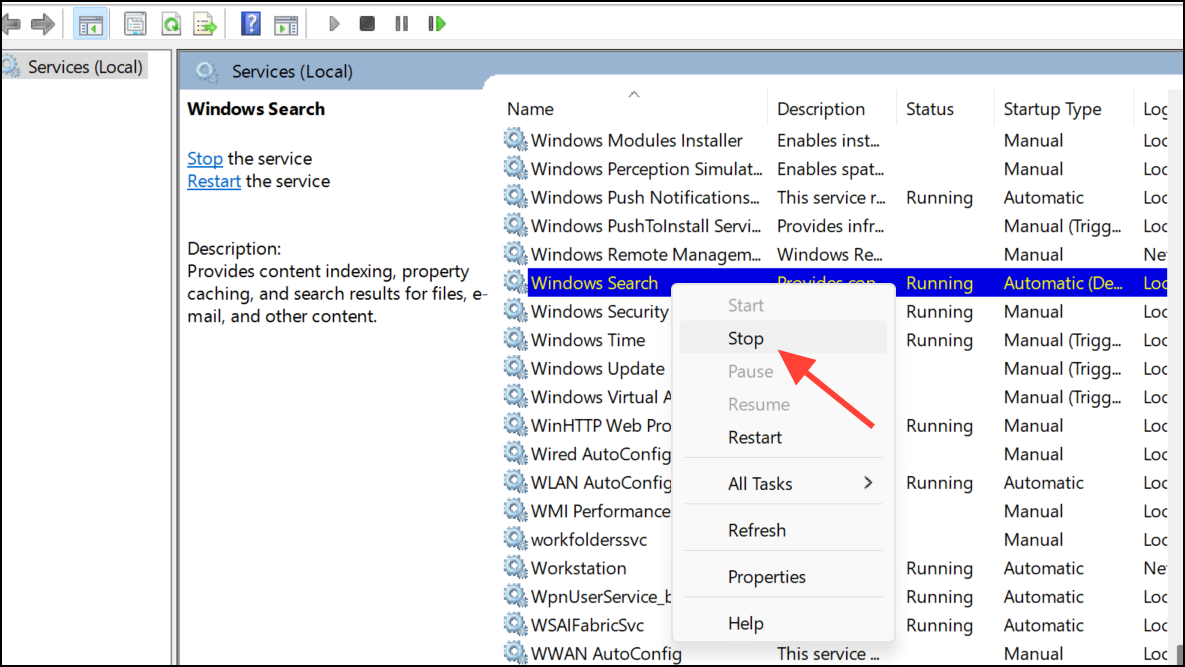
Step 3: Double-click Windows Search to open its properties. Set the Startup type to Automatic to ensure the service starts whenever Windows boots. Click Apply and OK to save your settings. Restart your computer to confirm that the changes take effect.

Ensuring this service is running and set to automatic startup keeps search features available and reliable throughout system use.
Terminate and Restart the SearchHost.exe Process
The SearchHost.exe process manages the Windows 11 search interface. If it becomes stuck or corrupted, the search bar may stop responding.
Step 1: Open Task Manager with Ctrl + Shift + Esc. Switch to the Details tab.
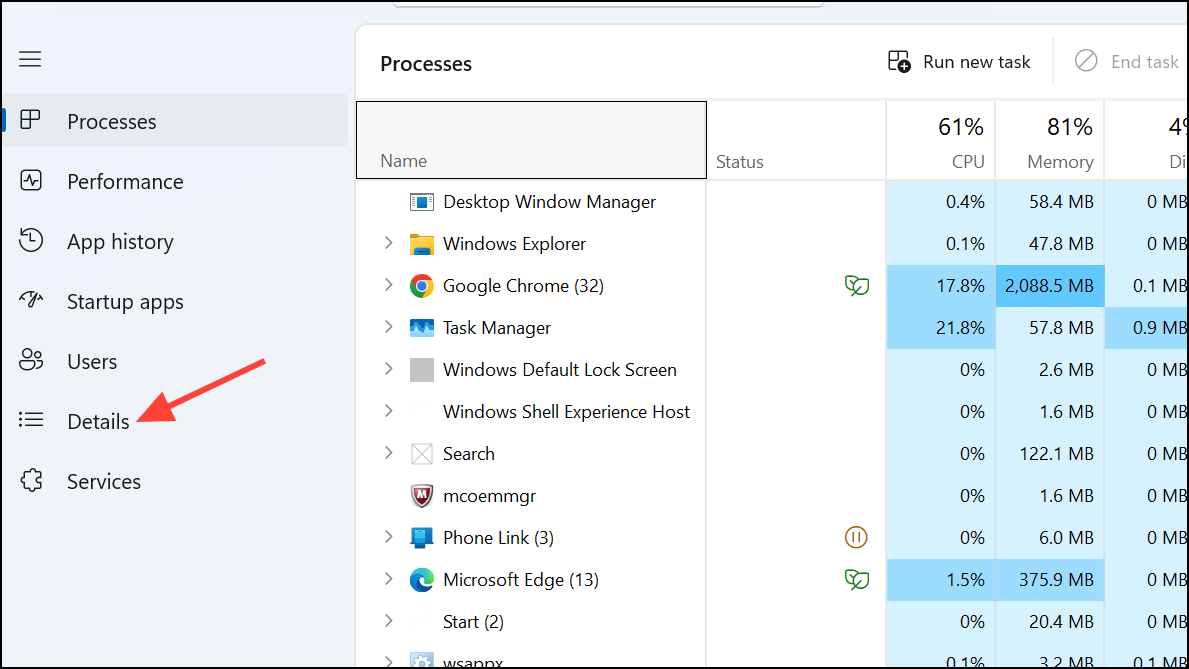
Step 2: Locate SearchHost.exe in the list. Right-click and select End task. Confirm the action if prompted.
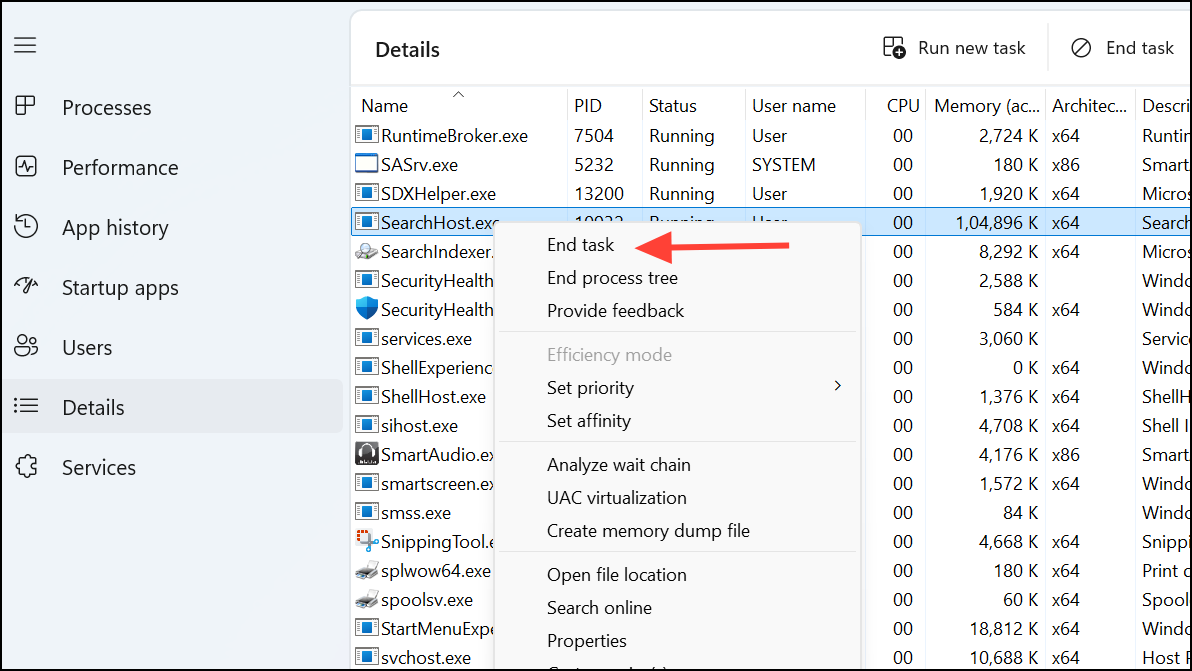
Windows will automatically restart the process the next time you use the search bar. This refreshes the search interface, resolving issues caused by hung or unresponsive background operations.
Repair System Files Using the Windows Recovery Tool
If previous steps do not restore search functionality, deeper system file corruption may be the cause. Windows 11 includes a recovery tool that reinstalls system files without affecting your personal data or installed applications.
Step 1: Open Settings (Windows + I) and go to System, then select Recovery.
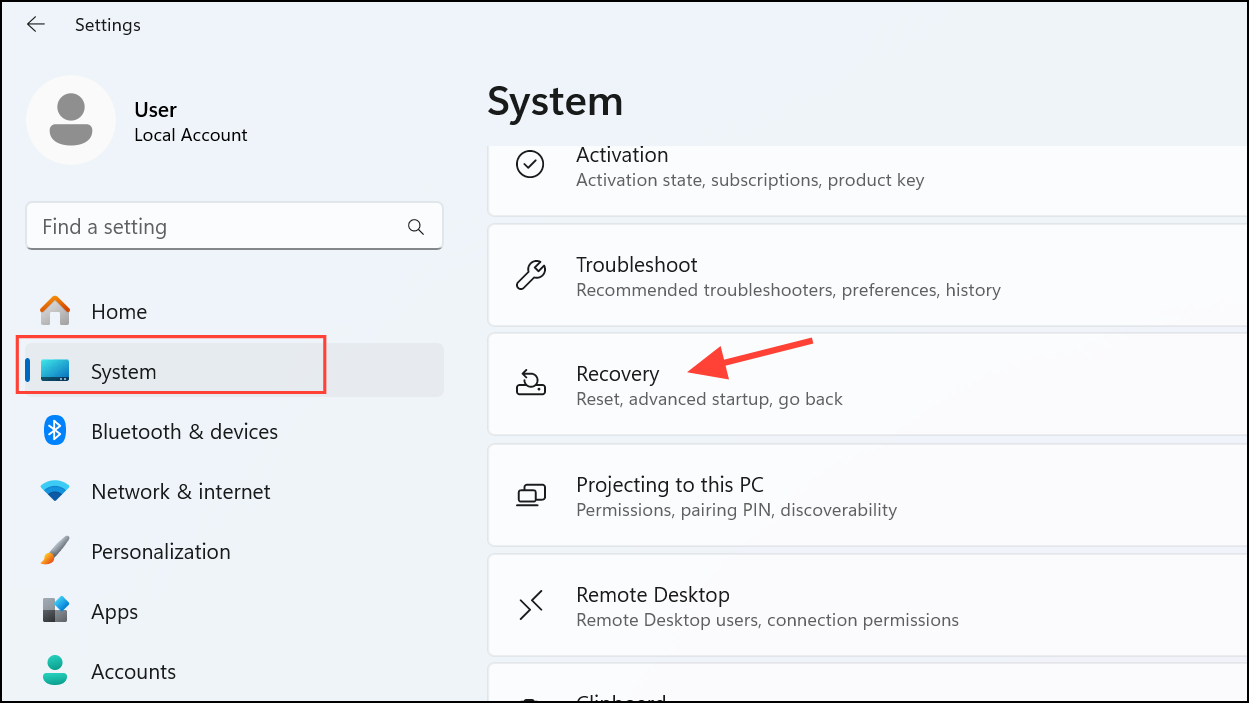
Step 2: Under "Fix problems using Windows Update," click Reinstall now. Follow the on-screen prompts to allow Windows to repair or reinstall system components. Your files and apps will remain intact, but damaged system libraries and services will be replaced.
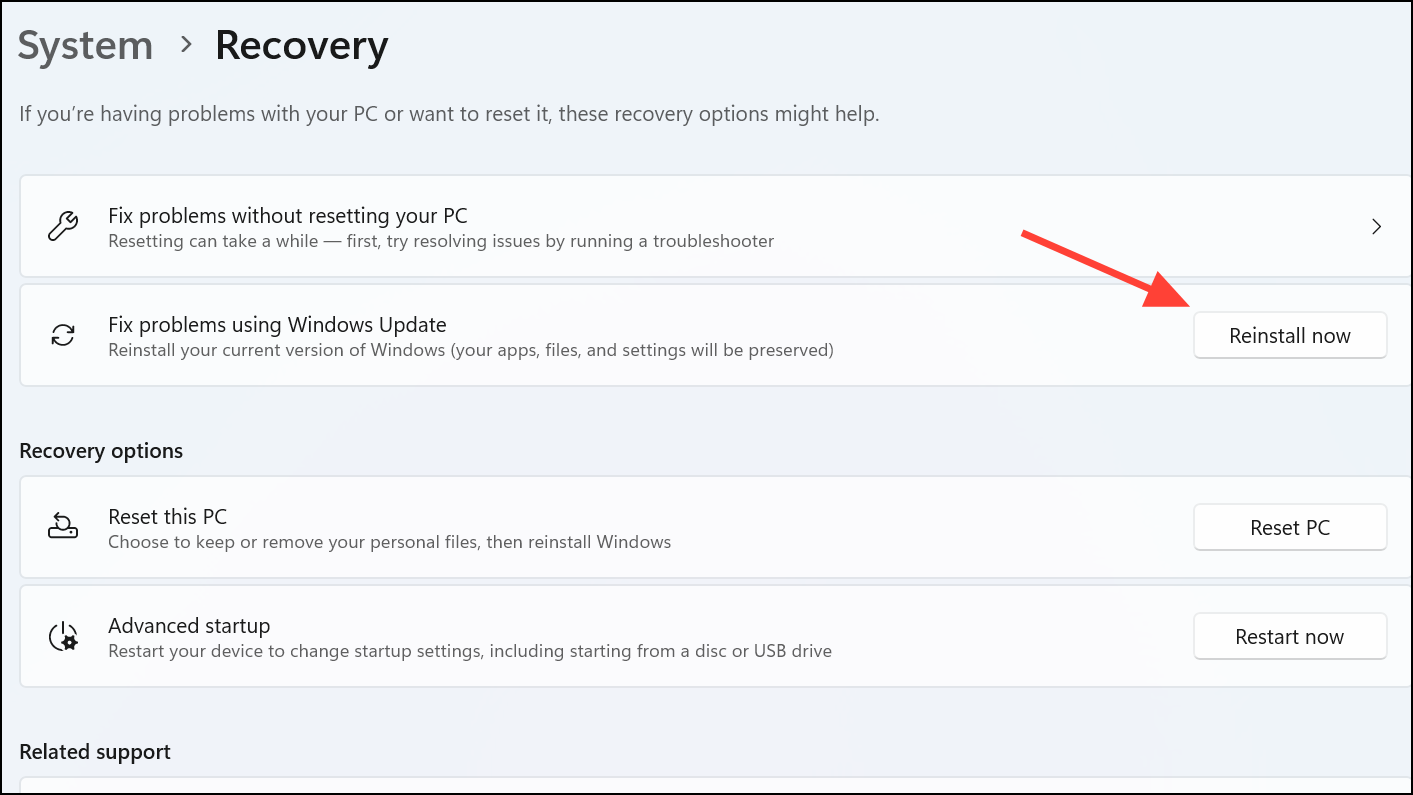
After the process completes and your PC restarts, check if the search bar is functioning as expected. This method is especially effective for persistent issues tied to system file corruption or incomplete updates.
Additional Troubleshooting and Community Tips
- Switching to a new user profile can resolve search issues if the problem is limited to a single account, indicating user-level corruption.
- Running command-line tools like
sfc /scannowandDISM /Online /Cleanup-Image /RestoreHealthcan repair underlying system file problems that disrupt search services. - Temporarily disabling third-party antivirus or security software helps determine if these programs are interfering with Windows Search.
- Adjusting search index locations or removing unnecessary folders from the index can reduce errors and speed up results.
- Opening and closing the Run dialog (
Windows + R) before using the search bar sometimes restores typing functionality when the input box fails. - Disabling Bing integration in search results through registry edits or group policies can improve search speed and privacy, though this removes web results from the search bar.
Each of these strategies targets a specific cause of search failure, from corrupted indexes to stalled processes or user profile issues. Starting with interface and service restarts, then progressing to index rebuilding and system repair, will restore the search bar’s reliability for most users.
Applying these fixes restores fast, accurate search capabilities in Windows 11, making it easier to find files, apps, and settings without delays or frustration. Regular maintenance of search settings and periodic index rebuilding will keep your system running smoothly.


